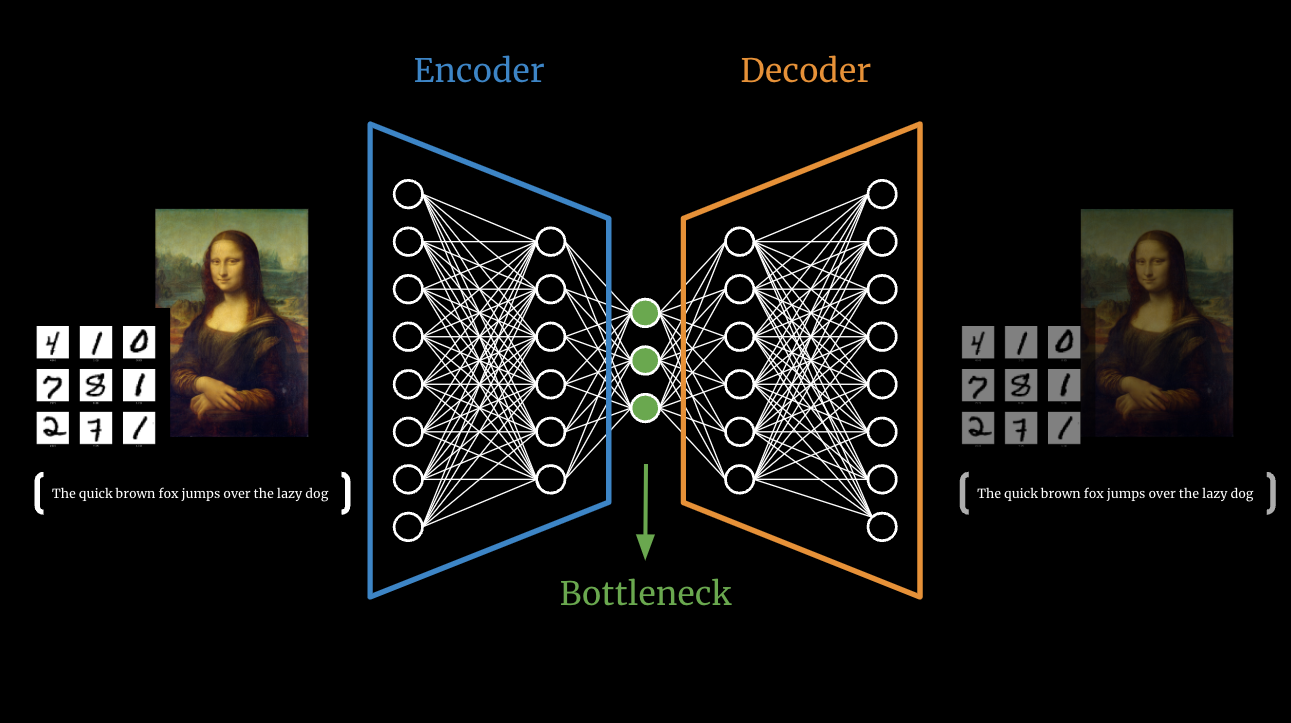
Auto-encoders are a type of neural network that has been gaining popularity in recent years. They are particularly useful for tasks such as dimensionality reduction and feature learning. As the famous computer scientist Yann LeCun said, “Auto-encoders are the closest thing we have to a brain”.
An auto-encoder is a neural network that consists of two parts: an encoder and a decoder. The encoder compresses the input data into a lower-dimensional representation, while the decoder tries to reconstruct the original input from the compressed representation. The idea is that the compressed representation contains the most important features of the input data.
Mathematically, an auto-encoder can be represented as:
\[x -Input Data\] \[f_{encoder}(x) - Compressed Representation\] \[f_{decoder}(f_{encoder}(x)) - Reconstructed Input\]The idea is to minimize the difference between the original input and the reconstructed input, this is done by minimizing the reconstruction loss function, for example, Mean Squared Error (MSE) loss:
\[L = \frac{1}{n} \sum_{i=1}^{n} (x_i - f_{decoder}(f_{encoder}(x_i)))^2\]Auto-encoders can also be used in unsupervised pre-training of deep neural networks, by initializing the weights of the network with the weights learned by the auto-encoder, this can help the network to converge faster and improve the overall performance.
Auto-encoders have several variations such as:
- Convolutional Auto-encoders that use convolutional layers in the encoder and decoder for image data.
- Variational Auto-encoders that introduce a probabilistic approach to the encoder and decoder, allowing them to generate new samples from the learned distribution.
- Denoising Auto-encoders that are trained to reconstruct the original input from a corrupted version of it, this can help the network to be more robust to noise in the input data.
Auto-encoders can be used in various applications such as:
- Image compression and denoising
- Anomaly detection
- Generative models
- Unsupervised pre-training of deep neural networks
In summary, auto-encoders are a powerful tool for dimensionality reduction and feature learning. They work by compressing the input data into a lower-dimensional representation and then reconstructing the original input from the compressed representation. As the famous data scientist Andrew Ng said, “Auto-encoders are a powerful tool that can help us understand the structure of the data”.
